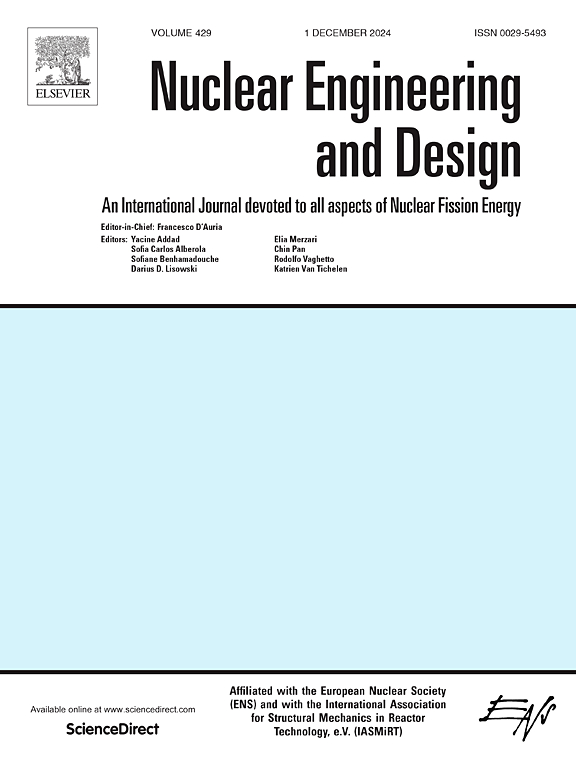A multi-fidelity multi-scale methodology to accelerate development of fuel performance codes
IF 1.9
3区 工程技术
Q1 NUCLEAR SCIENCE & TECHNOLOGY
引用次数: 0
Abstract
Multi-scale methodologies have been developed and applied successfully in the frame of nuclear fuel performance analyses, but the complexity of the tools involved hinders their extensive application. Gaps in modelling capabilities of specific input/outputs in particular limits code-to-code communication. In this work, we propose a multi-fidelity methodology to tackle this issue. The application presented here concerns the inclusion of a meso-scale module describing fission gas behaviour (SCIANTIX) in a fuel performance code (FRAPCON). A critical input parameter of the meso-scale module, the local hydro-static stress in the fuel, is not predicted by such fuel performance code, hence limiting this coupling. This gap is filled by using a second fuel performance code (TRANSURANUS) to construct a virtual dataset of local hydro-static stress values, on which an artificial neural network is trained and included in the FRAPCON/SCIANTIX coupled suite. This multi-fidelity methodology is demonstrated by simulating the Risø AN3 irradiation experiment.
求助全文
约1分钟内获得全文
求助全文
来源期刊

Nuclear Engineering and Design
工程技术-核科学技术
CiteScore
3.40
自引率
11.80%
发文量
377
审稿时长
5 months
期刊介绍:
Nuclear Engineering and Design covers the wide range of disciplines involved in the engineering, design, safety and construction of nuclear fission reactors. The Editors welcome papers both on applied and innovative aspects and developments in nuclear science and technology.
Fundamentals of Reactor Design include:
• Thermal-Hydraulics and Core Physics
• Safety Analysis, Risk Assessment (PSA)
• Structural and Mechanical Engineering
• Materials Science
• Fuel Behavior and Design
• Structural Plant Design
• Engineering of Reactor Components
• Experiments
Aspects beyond fundamentals of Reactor Design covered:
• Accident Mitigation Measures
• Reactor Control Systems
• Licensing Issues
• Safeguard Engineering
• Economy of Plants
• Reprocessing / Waste Disposal
• Applications of Nuclear Energy
• Maintenance
• Decommissioning
Papers on new reactor ideas and developments (Generation IV reactors) such as inherently safe modular HTRs, High Performance LWRs/HWRs and LMFBs/GFR will be considered; Actinide Burners, Accelerator Driven Systems, Energy Amplifiers and other special designs of power and research reactors and their applications are also encouraged.
 求助内容:
求助内容: 应助结果提醒方式:
应助结果提醒方式:


